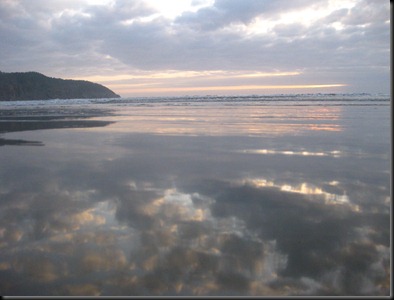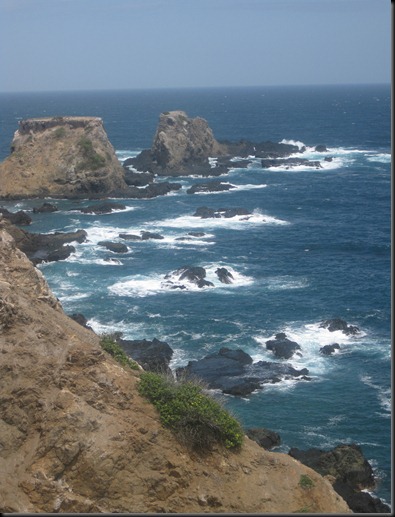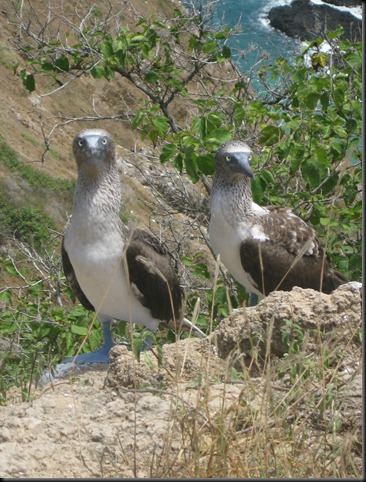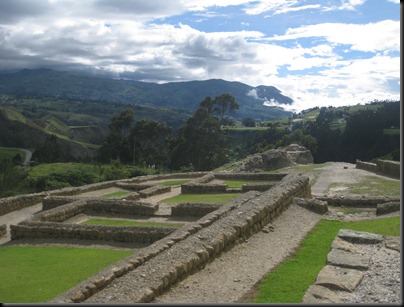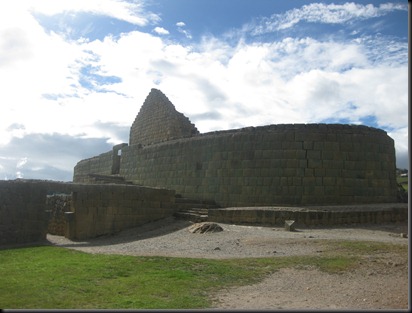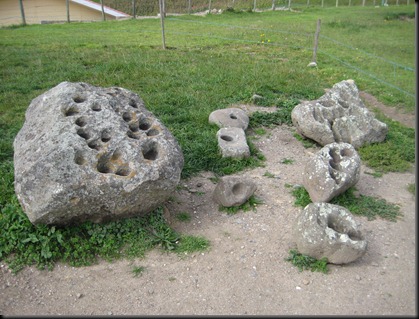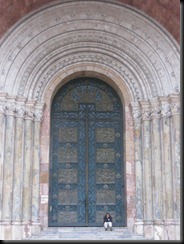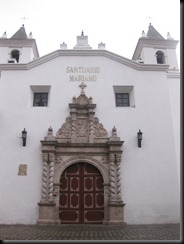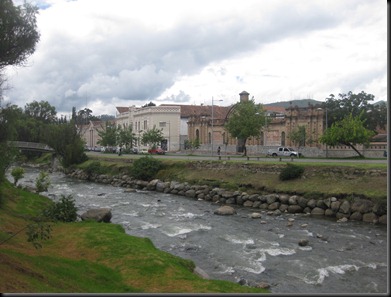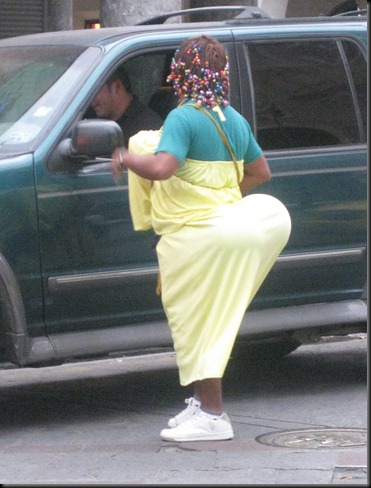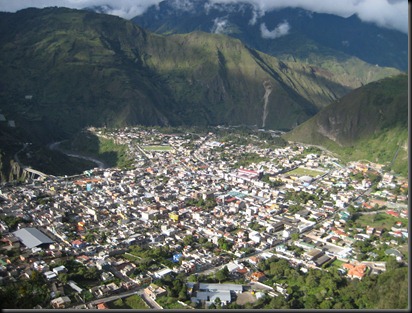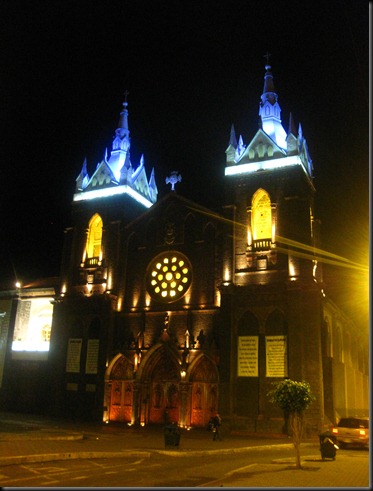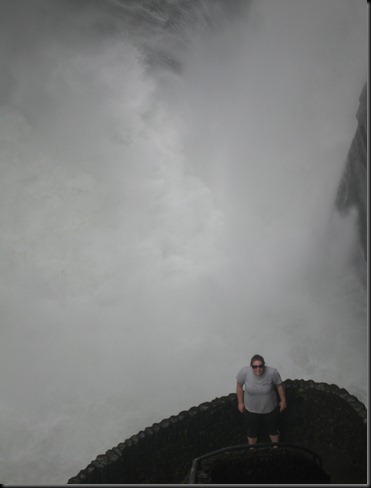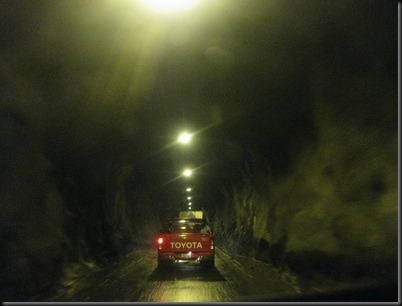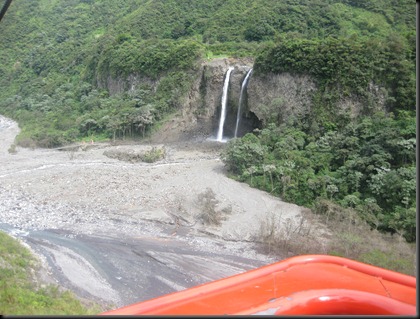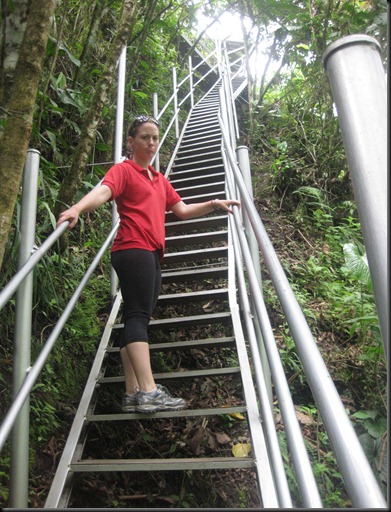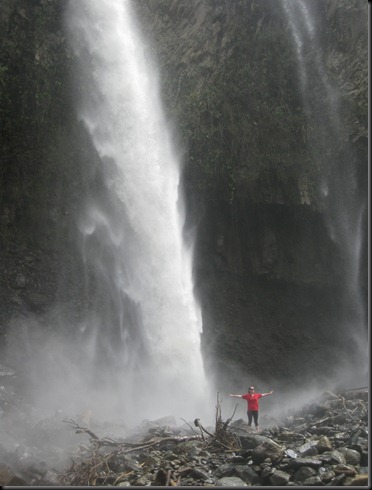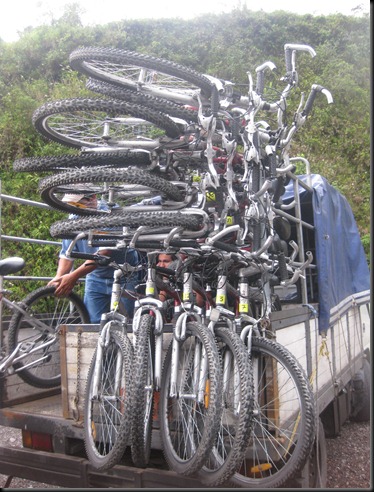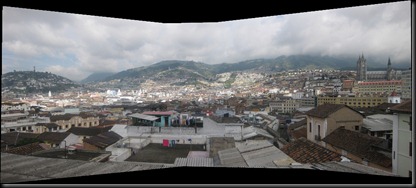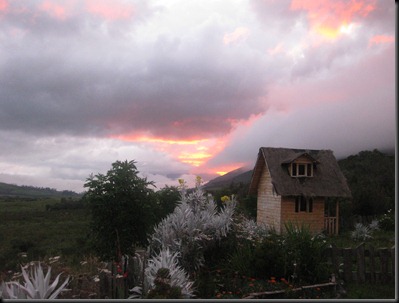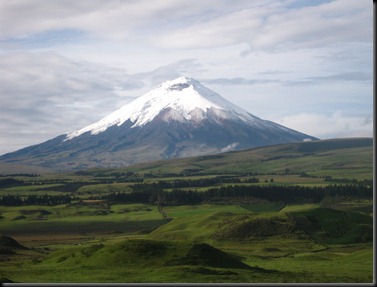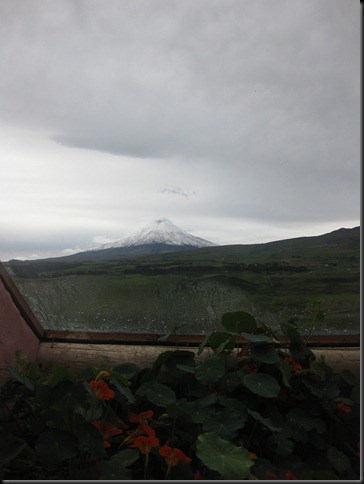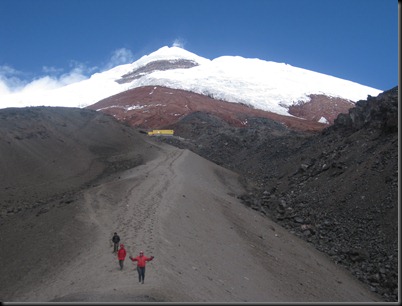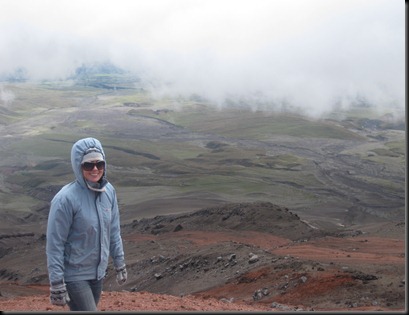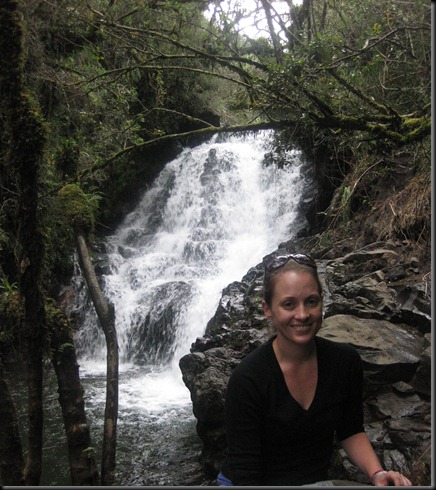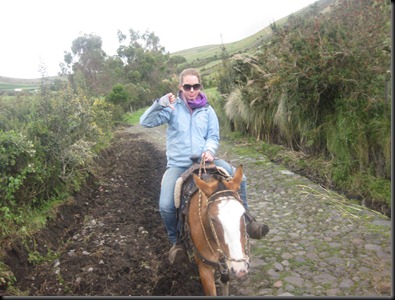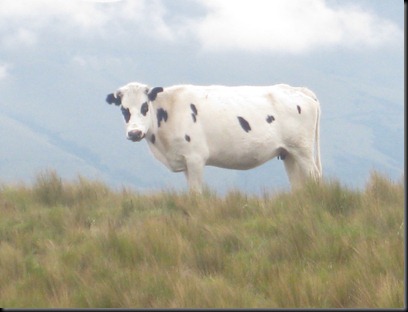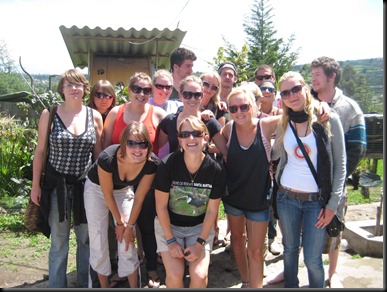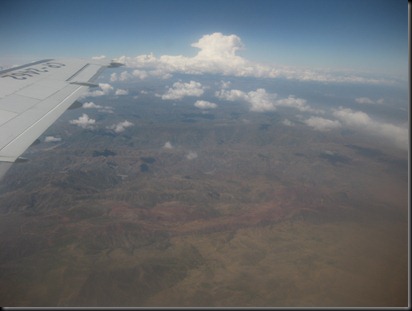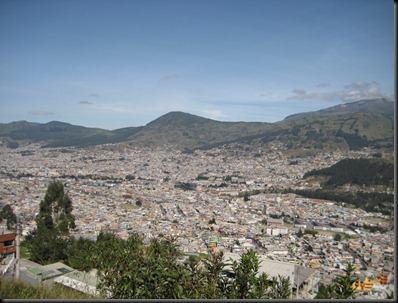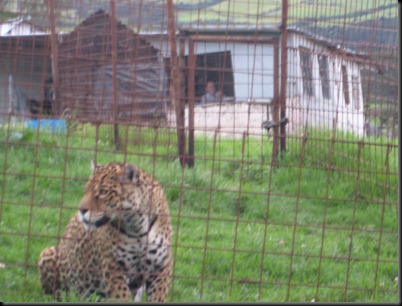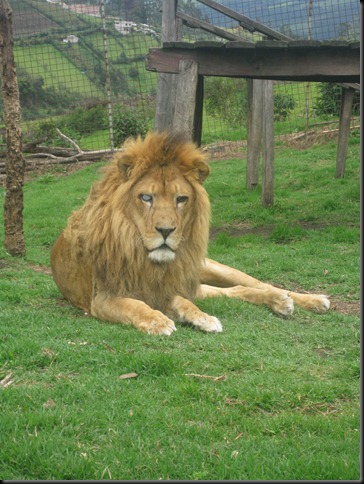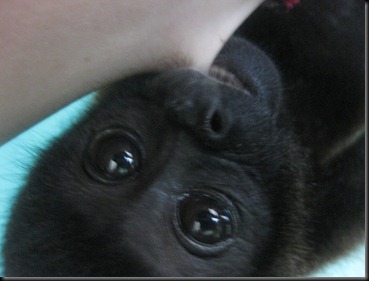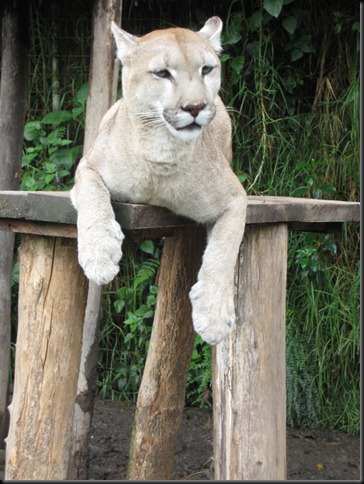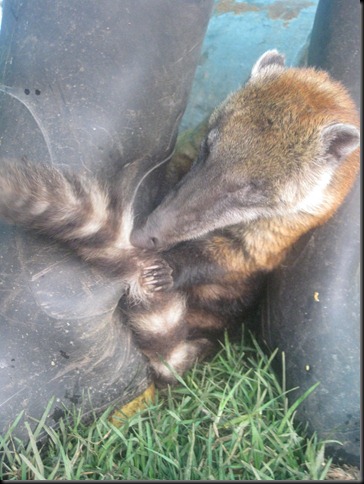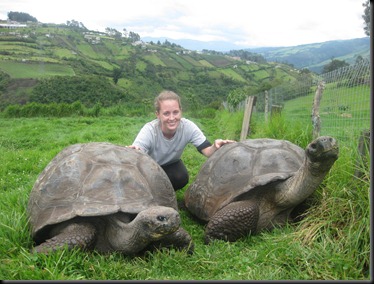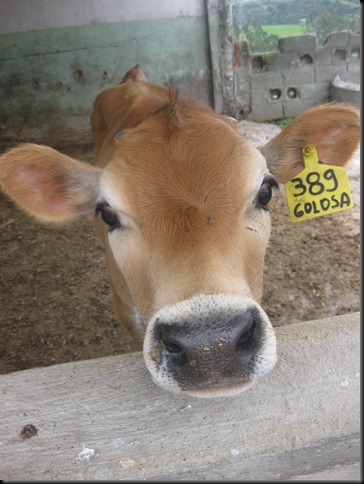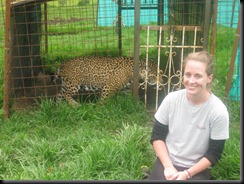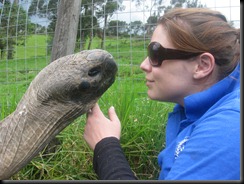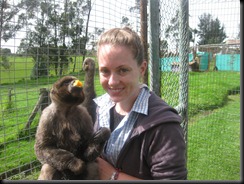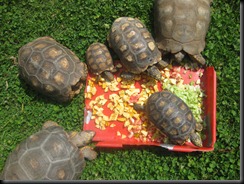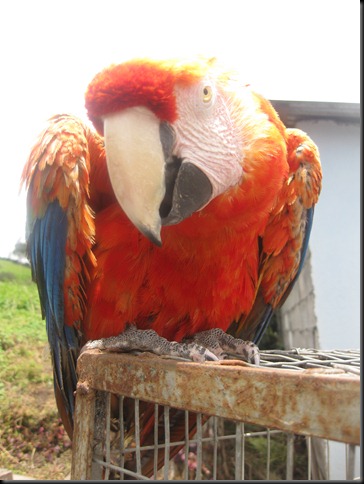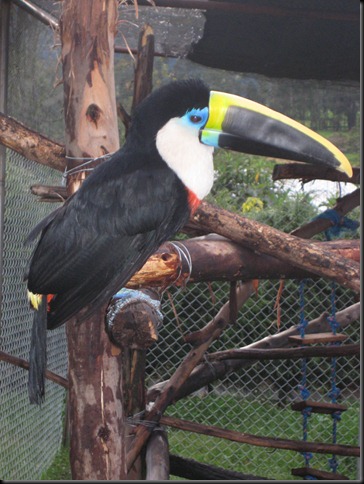Well, no. But that sounds a whole lot more impressive than swimming with plankton. Ok, so now I’m understating our experience. We got to swim with some really beautiful and pretty big fish, but I’ll get to that.
With my monetary funds being as stretched as they are, and with at least 6 months of travel left, there was no way that I could justify splurging and blowing a good $1K for a few days in the Galapagos. So when Claire discovered the ‘poor mans' Galapagos’ in her guide book, it shot to the top of our itinerary. By this stage, we can definitely say we are ‘poor men’ in the money stakes.
With found memories of Uruguay and the coast, we were keen for some more beach action. We are getting rather pasty - Ecuador is not the tropical haven I expected, often needing to pull out my huge woollen jumper, jeans and socks to keep warm. And, it rains like you wouldn’t believe. ‘Spose we are right in the middle of wet season so it is more so bad timing for a visit on our part.
Anyway, after plotting several spots along the coast that we thought sounded good – I can’t resist a place when it as described as being full of hammocks, and barefooted, board short wearing people, off we went, smiles as wide as our faces, looking forward to sand. First stop, the small fishing village of Puerto Lopez.
First thing we did after we pulled up, after being harassed by a man and his Thai style tuk-tuk who was desperate for us to stay at his hostel, was head straight to the beach. It was picturesque. Little blue fishing boats bobbing up and down, the clouds reflected in the ocean. We strolled along the foreshore, looking for a place to stay, desperate to stay on the beach. Who greeted us at the door of the place we eventually decided on? The man with the tuk-tuk. He just laughed at us for having walked all that way.
Next stop – organise a tour. Just like Banos, everyone and anyone in this town will offer you a tour of the ‘poor mans Galapagos’ or the Isla de la Plata. From every passing tuk-tuk driver, to the internet cafe boy who looked about 15, to Javier, the guy who was looking after our hostel. One thing that the South Americans have mastered is the art of nagging. Javier kept nagging and nagging for us to go with him to the Island. We kept coming up with some silly excuse to avoid committing to him. However, with his price kept getting cheaper and cheaper, in the end we caved, even though we were dreading the thought of a little tinny pulling up to take us the 30kms across the choppy Pacific to the island.
So it was no tinny, but it was scary enough travelling the good hour to the Island on the ‘Amazing I’, even for me, who is well accustomed to tipping boats (thanks, dad). The Pacific rolled us in every direction like balls in a pin-ball machine until we finally, and thankfully, arrived in one piece; except for my head that got a good knock thanks to a really big wave.
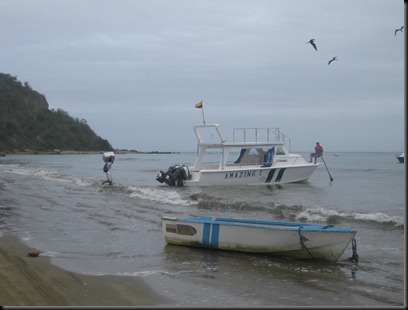 Luckily for us we got the boat in the background
Luckily for us we got the boat in the background
I have come up with a theory as to why it is called the Island of Silver, it is no ‘Island of Gold’ in terms of the animals it has to offer. Gold is the best. Gold is the Galapagos. While the Isla de la Plata plays host to Galapagos Albatros, Blue Footed Boobies, and other species of bird, it misses the Galapagos turtles, seals and other amazing animals you will witness at the Galapagos. Guess I can’t complain. I did get to play with Galapagos turtles at the sanctuary, and I did pay only $45 for the entire tour. I should only get to see a fraction of the animals and wander the parched island in the stinking heat. Though we were lucky enough to catch a glimpse of two turtles swimming underneath our boat as we pulled up.
The best part of the day was snorkelling about 20 metres off shore. Diving off the boat into the slightly murky, but still very blue water, we dove with fish of various varieties and sizes. They weren’t shy at all. At one point, you didn’t have to put your head under half a metre and you were swimming in a circle of fish. They were very inquisitive, some of the larger ones a little too inquisitive, giving one guy on our tour a bit of a nibble.
With the weather rather inclement, except of course on the day we decided to leave, and Puerto Lopez rather unimpressive, we decided to skip the rest of the coast and head back to Quito to organise a trip to the jungle.
Ecuadorian buses never cease to amaze me, in a bad way. They by far have to be the worst in terms of causing annoyance. Not only do they stop to pick up every person standing on the side of the road, even if they are only going a couple of kilometres down the street, the also pick up every street salesman, selling who knows what. At first, the guy who gets on trying to sell you underwear is amusing, but by the third one, it is aggravating. And the list of items they have for sale is never ending – seriously, if you needed to shopping you should just sit on an Ecuadorian bus for an hour or so and you would get everything you need. Sunglasses, check. Pencils, check. Whole coconuts, check. Raw beans, check. One guy got on with a rooster stuffed in his duffel bag and the girl behind us had a chicken. You get a lot of beggars as well who love to sing songs in return for small change, from the blind to young children, they have no qualms about beating out a couple of songs, usually entirely out of tune, at the front of the bus.
Bring on the jungle!
